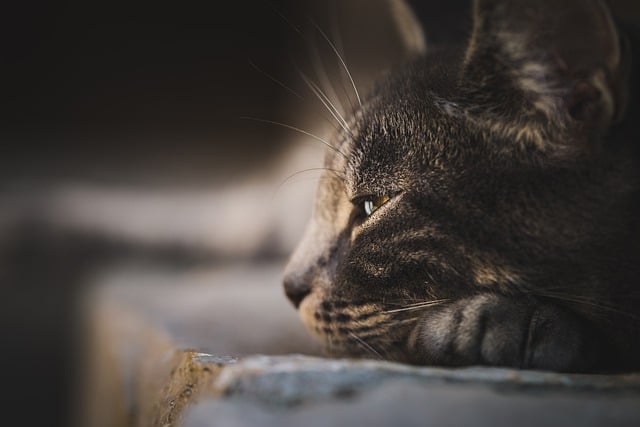The best toilet training for cats involves using a litter box and positive reinforcement techniques. Toilet training your cat can be a daunting task, but it is essential to maintain cleanliness in your home and keep your cat happy and healthy.
Using a litter box and positive reinforcement techniques can make the process easier for both you and your cat. It is crucial to choose the right litter box, location, and litter type to suit your cat’s preferences. Consistency and patience are also key factors in toilet training your cat.
With the right approach, your cat can learn to use the litter box and avoid accidents in the house. We will discuss the best toilet training techniques for cats to make the process as stress-free as possible.
The Cat’s Instincts
Cats have innate instincts that can be harnessed for successful toilet training.
Advantages Of Aligning Training With Instinct

Cat’s natural behaviours make toilet training easier and more effective.
Getting Started With Toilet Training
Getting started with toilet training for your cat is an exciting journey towards a cleaner and more convenient home environment. By following a few simple steps and being patient, you can successfully teach your feline friend to use the toilet like a pro.
Choosing The Right Training Kit
When selecting a toilet training kit for your cat, opt for one that is specifically designed for feline use. Look for kits that include a training seat, step-by-step instructions, and any necessary accessories.
Setting Up A Training-friendly Environment

Create a comfortable and accessible space for your cat’s toilet training. Ensure the litter box or training seat is placed in a quiet and private area, away from loud noises or distractions.
Transition From Litter Box To Toilet
Transitioning your cat from a litter box to the toilet can be a game-changer for both you and your feline friend. It not only eliminates the need for constantly cleaning and changing the litter box but also provides a convenient and hygienic solution. Making this transition requires patience, consistency, and understanding of your cat’s behaviour. Below, we’ll discuss the steps to smoothly shift your cat’s toilet habits from the litter box to the toilet.
Gradual Shift In Routine

Transitioning your cat to use the toilet is a gradual process that should be approached with patience. Start by moving the litter box closer to the bathroom. Once your cat is comfortable with this change, gradually elevate the litter box by placing it on a stable platform. This will help your cat get used to the increased height and prepare them for the transition to the toilet.
Familiarizing Your Cat With The Bathroom

Introduce your cat to the bathroom environment by allowing them to spend some time in the room. Place their elevated litter box near the toilet to help them associate the new location with their usual toilet spot. Encourage positive associations by offering treats and praise when they use the litter box in the bathroom. This will help them feel comfortable and secure in the new environment.
Training Techniques And Tips
Toilet training your cat can be a rewarding experience when using effective techniques and tips. By implementing positive reinforcement strategies and being mindful of common mistakes to avoid, you can successfully train your feline friend to use the litter box consistently.
Positive Reinforcement Strategies

- Use treats or affection to reward your cat for using the litter box.
- Consistently praise your cat immediately after they use the box correctly.
- Place the litter box in a quiet and accessible location for your cat.
- Ensure the litter box is clean and inviting for your cat to use.
Common Mistakes To Avoid
- Avoid punishing your cat for accidents outside the litter box.
- Do not use a covered litter box if your cat is not comfortable with it.
- Avoid sudden changes in the litter type or box location.
- Do not scold your cat for past accidents, as it can create anxiety.
Reading Your Cat’s Cues
Understanding your cat’s behaviour is crucial when toilet training them.
Closely observe their cues to ensure a successful training process.
Understanding Signs Of Stress
- Excessive scratching or meowing can indicate stress.
- Watch for avoidance of the litter box or sudden aggression.
Knowing When To Progress Or Regress In Training
- Gradually introduce new steps if your cat shows readiness.
- Revert to previous steps if they display confusion or resistance.
Maintaining Hygiene And Safety
Cat toilet training is not only about teaching your feline companion to use a litter box, but also about maintaining hygiene and ensuring their safety throughout the training process and beyond. Here are some important considerations to keep in mind to ensure a clean and safe environment for both you and your cat.
Cleaning Procedures Post-training
Once your cat has successfully completed toilet training, it’s essential to establish a regular cleaning routine to maintain hygiene. A clean litter box is crucial for your cat’s health and well-being. Make sure to:
- Regularly scoop and remove waste from the litter box
- Thoroughly clean and disinfect the litter box at least once a week
- Replace the litter with a fresh supply as needed
Ensuring Your Cat’s Safety During And After Training
During the training process and beyond, it’s important to prioritise your cat’s safety. Here are some safety measures to consider:
- Choose a non-toxic and low-dust litter to minimize respiratory issues
- Keep the litter box in a quiet and accessible location to prevent stress and accidents
- Monitor your cat’s behaviour and litter box usage to identify any potential health concerns
Troubleshooting Common Issues
For the best toilet training for cats, troubleshooting common issues can make the process smoother. Addressing problems such as litter box aversion or accidents outside the box can help in successful training. Understanding the root causes and implementing effective solutions is key to achieving positive results.
Addressing Accidents And Setbacks
Accidents happen, even with the best-trained cats. Clean up messes promptly to prevent repeat offences.
Adjusting Training For Older Cats Or Those With Special Needs
Older cats or those with special needs may require extra patience and understanding. Tailor training methods to suit their individual needs.
Beyond Training: Long-term Considerations
Monitoring Long-term Toilet Use
Regularly check your cat’s bathroom habits to ensure they are consistently using the toilet.
If you notice any changes, investigate promptly to address any potential issues.
When To Revert To A Litter Box
If your cat starts having accidents or shows signs of distress, consider reintroducing a litter box.
Observe their behaviour closely to determine if the switch is necessary for their comfort.
Frequently Asked Questions
Do Vets Recommend Toilet Training Cats?
Yes, vets generally recommend toilet training for cats as it reduces litter box maintenance and odour.
What Is The Best Way To Toilet Train A Cat?
The best way to toilet train a cat is to gradually introduce them to a litter box, then move the box closer to the toilet over time. Once the cat is comfortable using the litter box next to the toilet, slowly raise the box until it is level with the toilet seat.
Finally, transition to a special litter box that sits on top of the toilet. Consistency and patience are key to success.
Is It Worth It To Train Your Cat To Use The Toilet?
Yes, it can be worth it to train your cat to use the toilet. It can save you money on litter and reduce environmental impact. However, it requires patience, consistency, and willingness to clean the toilet regularly. It may not work for all cats and may take several weeks or months to train.
How Long Does It Take To Train A Cat To Use A Human Toilet?
Training a cat to use a human toilet typically takes around 2–6 weeks. Consistency and positive reinforcement are key to success. Gradual transition from a litter box to a toilet is important. Patience and persistence are essential for successful training.
To sum up, toilet training for cats can be a rewarding experience for both you and your feline friend. With the right techniques and patience, you can successfully teach your cat to use the toilet. Remember to be consistent and positive throughout the process, and you’ll soon enjoy a litter-free home.
